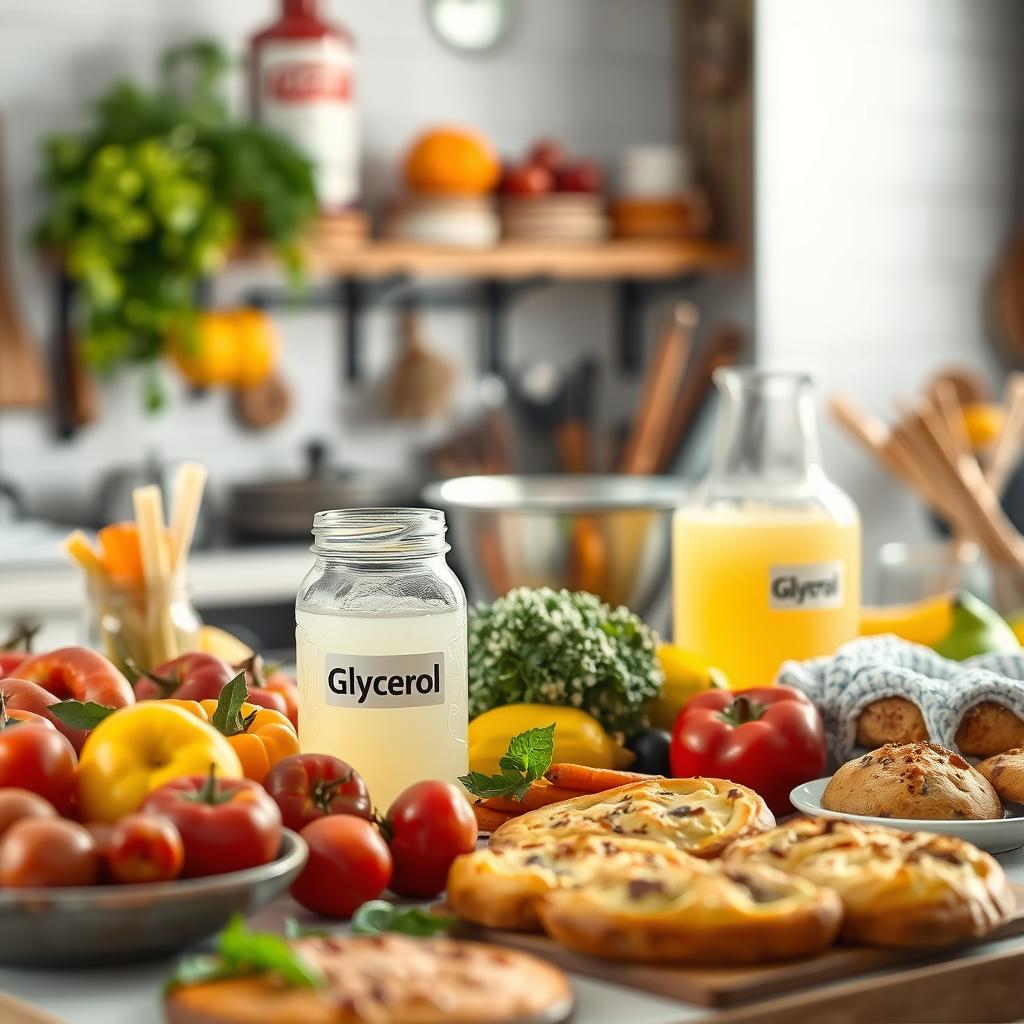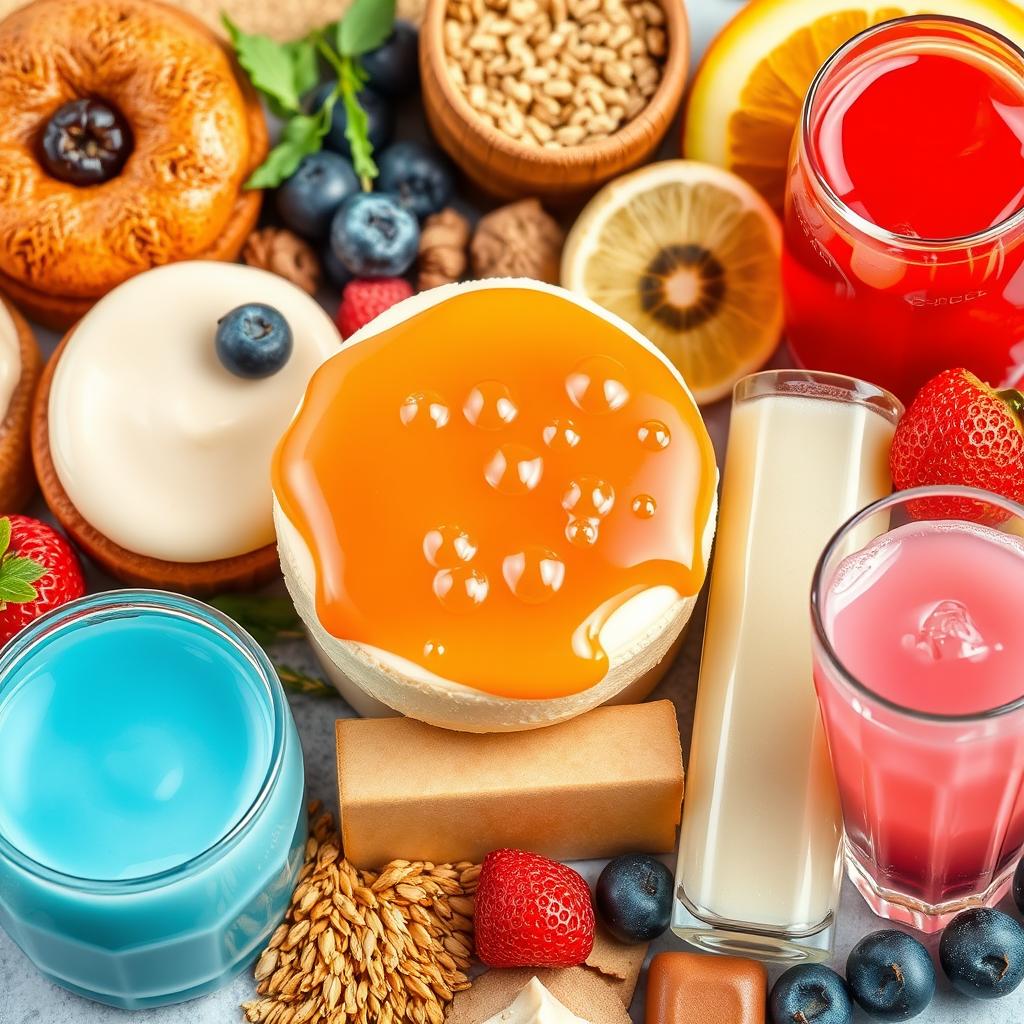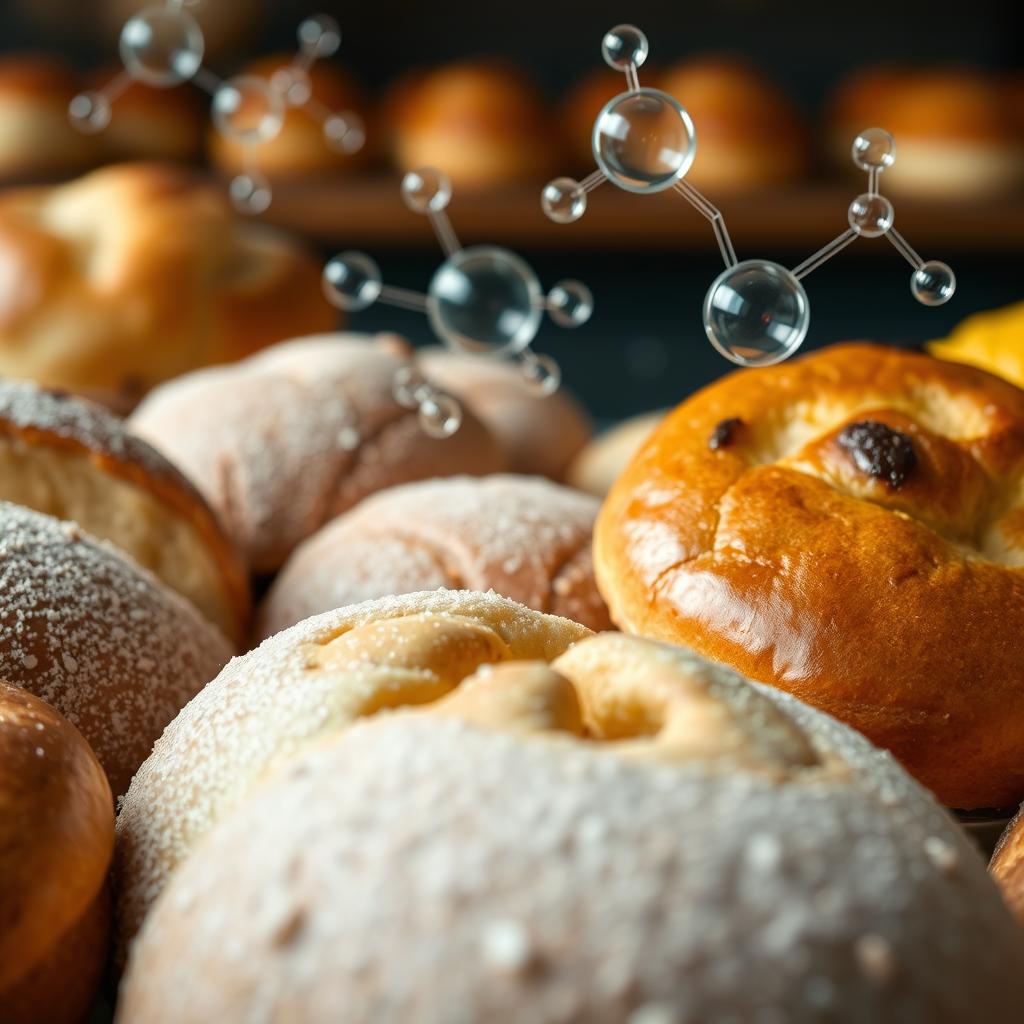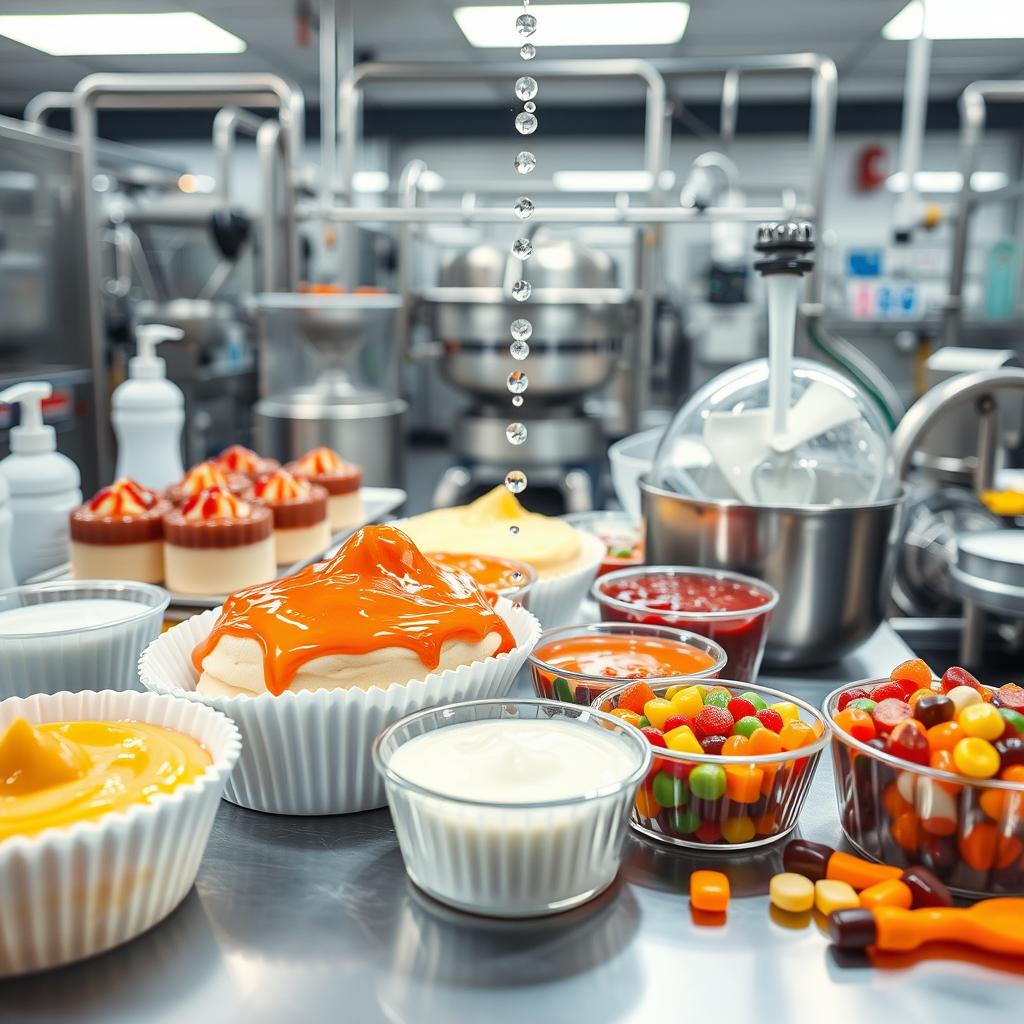What role does glycerol play in the food industry? It impacts the quality and safety of food products. Glycerol is used in many ways, including food grade glycerol uses. It improves texture and extends shelf life. Glycerol is key in many food products. It’s used in bakery goods, confectionery, and beverages. It enhances flavor, texture, and appearance. As a food additive, glycerol is safe, making it a favorite among food makers. Its benefits are clear, and its use is growing.
Click to use Silverigroup personal shopper services
Key Takeaways:
- Glycerol is a versatile ingredient used in various food products
- Food grade glycerol uses include improving texture and extending shelf life
- The benefits of glycerol in food products are numerous and well-documented
- Glycerol is generally recognized as safe by regulatory authorities
- Glycerol in the food industry is a growing trend, with increasing applications
- Glycerol is used to enhance flavor, texture, and appearance of food products
- Glycerol plays a vital role in the quality and safety of food products
What is Glycerol and Its Role in Food Production
Glycerol is a versatile compound used in food production. It helps with texture, moisture, and flavor. It’s perfect for making food better, from baked goods to candies. The food industry has strict rules to ensure glycerol is safe for us. Using glycerol in food has many benefits. It keeps food moist and tasty. It also makes food last longer. Here are some key advantages:
- Moisture control: Glycerol keeps food’s moisture right, so it’s not too dry or too wet.
- Texture modification: It makes food feel better in your mouth, making it more enjoyable.
- Flavor enhancement: Glycerol can make food taste even better, enhancing the eating experience.
Glycerol is used in many foods, like baked goods, candies, and energy bars. The food industry follows strict rules to make sure glycerol is safe for us. Glycerol is very important in food production. Its use has grown a lot in recent years. Its unique properties and versatility make it a key ingredient in many foods.
Click to buy citric acid from Silvairgroup
The History of Glycerol in Food Manufacturing
Glycerol has been used in soap making and pharmaceuticals for a long time. Its use in food marked a big step for the food industry. Over time, its role in bakery and confectionery products has grown, thanks to new production and application methods.
The adoption of glycerol in food manufacturing has been slow but steady. At first, it was used to keep food moist. Later, as technology improved, it was used to enhance texture and extend shelf life. For example, it made bread and pastries taste fresher and better. Some key benefits of glycerol in sweets include:
- It helps control moisture, preventing sugar from crystallizing
- It makes textures smoother and more even
- It helps keep products fresh for longer

The growth of glycerol as a food additive has been driven by better production and quality control. As demand for glycerol in food grows, makers must keep their products safe and of high quality. Today, glycerol is crucial in many foods. Its use is expanding into new areas. The history of glycerol in food shows the industry’s dedication to innovation and quality. It offers consumers a wide range of safe and tasty products.
Click to buy frozen a grade beluga fish from Silverigroup
| Industry | Application | Benefits |
|---|---|---|
| Bakery | Texture enhancement, moisture control | Improved freshness, longer shelf life |
| Confectionery | Moisture control, texture enhancement | Smoothened consistency, extended shelf life |
Manufacturing Processes of Food Grade Glycerol
The making of food-grade glycerol is a detailed process. It ensures the food safety of glycerol and its quality. Glycerol is used in many food items. Keeping it fresh and safe is key. Manufacturers use purification methods like distillation, filtration, and crystallization. These steps remove impurities. This makes sure the glycerol is safe for food use.
Purification Methods
- Distillation: This method heats glycerol to separate it from impurities based on their boiling points.
- Filtration: This method uses filters to remove impurities and contaminants from the glycerol.
- Crystallization: This method involves cooling the glycerol to form crystals, which are then separated from the impurities.
Quality control is crucial for food-grade glycerol. Manufacturers must follow strict guidelines. This ensures the food safety of glycerol and its quality.
Quality Control Standards
Regular testing and inspections are done to check if glycerol meets standards. This includes purity, moisture content, and other tests. It ensures the glycerol is safe for food use. The glycerol preservation in food industry is vital. It keeps the product’s quality and shelf life good. Manufacturers use advanced technologies to produce high-quality glycerol.
| Parameter | Standard |
|---|---|
| Purity | 99.5% |
| Moisture Content | 0.5% |
| pH Level | 5.5-6.5 |
Benefits of Using Glycerol in Food Products
Glycerol is a versatile ingredient used in many food products. It offers several benefits to food manufacturers. The benefits of glycerol in food products include better texture, longer shelf life, and improved flavor. It helps control moisture, which is key for the right texture in food. Some of the key advantages of using glycerol in food manufacturing are:
- Texture modification: Glycerol helps to create a smooth and even texture in food products.
- Moisture control: Glycerol controls moisture levels, preventing the growth of microorganisms and extending the shelf life of food products.
- Flavor enhancement: Glycerol can enhance the flavor of food products, making them more appealing to consumers.
The glycerol applications in food manufacturing are diverse, ranging from bakery products to confectionery items. Food manufacturers can benefit from using glycerol in their production processes. It offers cost benefits and efficiency gains. With its numerous benefits and applications, glycerol is an essential ingredient in the food industry.

Overall, the benefits of using glycerol in food products make it a valuable ingredient for food manufacturers. Its ability to improve texture, extend shelf life, and enhance flavor makes it an essential component in various food products.
| Benefits of Glycerol | Description |
|---|---|
| Improved Texture | Glycerol helps to create a smooth and even texture in food products. |
| Extended Shelf Life | Glycerol controls moisture levels, preventing the growth of microorganisms and extending the shelf life of food products. |
| Enhanced Flavor | Glycerol can enhance the flavor of food products, making them more appealing to consumers. |
Glycerol as a Food Preservative
Glycerol is a key ingredient in the food industry. It helps keep food fresh for longer. Its glycerol preservation in food industry role is vital for food safety. It stops food from spoiling and getting contaminated. Glycerol keeps food moist and fights off harmful microbes. This makes it a natural and effective preservative. It’s great for keeping food safe and fresh.
- Moisture retention: Glycerol keeps food moist, preventing it from drying out and spoiling.
- Shelf life extension: It helps food last longer, cutting down on waste and improving safety.
- Antimicrobial properties: Glycerol stops harmful microbes from growing, reducing the risk of foodborne illness.
In summary, glycerol is a vital preservative in the food industry. It helps keep food safe and fresh. Its benefits are clear, making it a key ingredient in many food products.

Applications in the Confectionery Industry
Glycerol is key in the confectionery world. It makes sweets better by improving texture, stability, and taste. It stops sugar from forming crystals, keeping sweets smooth and fresh longer. Glycerol is used to make caramels, marshmallows, and gummies, among other treats. Using glycerol in sweets has many benefits:
- It makes sweets feel better in your mouth.
- It makes them taste and smell better.
- It stops sugar from turning into crystals.
- It helps sweets last longer on the shelf.
Glycerol isn’t just for sweets. It’s also in baked goods like cakes and pastries. It keeps them moist and soft. In the sweets world, glycerol is a must-have, and its uses are growing.
- Caramels
- Marshmallows
- Gummies
- Chocolates
In short, glycerol is very important in making sweets. It makes sweets better in many ways. It’s a key ingredient in many sweets, making them enjoyable to eat.
Glycerol’s Role in Bakery Products
Glycerol is a common ingredient in bakery products. It improves texture and extends shelf life. It keeps products moist, preventing staleness and keeping them fresh. Using glycerol in bakery products offers several benefits. It makes the texture softer and more tender. It also controls moisture, preventing spoilage and extending shelf life.
- Texture enhancement: Glycerol helps to create a softer, more tender crumb in bread and cakes.
- Moisture control: It prevents the growth of microorganisms, reducing the risk of spoilage and extending the product’s shelf life.
- Shelf life benefits: Glycerol’s humectant properties help to maintain the product’s freshness and texture over time.
Glycerol also enhances flavor and appearance in bakery products. It’s used in bread, cakes, and pastries. This improves their quality and appeal to consumers. Glycerol is a valuable ingredient in bakery products. It improves texture, extends shelf life, and enhances flavor and appearance. It’s a popular choice among bakers and food manufacturers for creating high-quality bakery products.
| Benefits of Glycerol | Description |
|---|---|
| Texture Enhancement | Creates a softer, more tender crumb in bread and cakes |
| Moisture Control | Prevents the growth of microorganisms, reducing the risk of spoilage |
| Shelf Life Benefits | Helps to maintain the product’s freshness and texture over time |

Safety Regulations and Compliance Standards
The food industry uses glycerol under strict rules. These rules help keep consumers safe and avoid legal issues. Food industry glycerol regulations set limits on how much glycerol can be in food. They also require clear labels and follow good manufacturing practices (GMPs).
Important parts of food safety of glycerol include:
- Following GMPs to avoid contamination and check quality
- Meeting labeling rules to inform consumers correctly
- Testing and checking glycerol levels often
By focusing on food industry glycerol regulations and food safety of glycerol, makers can lower risks. This ensures glycerol is used safely in food. Keeping up with new rules is key to keeping trust in glycerol products. The safe use of glycerol in food depends on good rules, careful testing, and a focus on food safety of glycerol. Together, makers, regulators, and buyers can make sure glycerol is used right in many foods.
Environmental Impact and Sustainability
Glycerol in the food industry affects the environment a lot. Its production can lead to a big carbon footprint, which harms our climate. But, using glycerol in food can also help the environment. For example, it can replace ingredients made from petroleum, which are not renewable. Using food grade glycerol can make food systems more sustainable. Here are some ways to do it:
- Make glycerol from renewable sources like vegetable oils.
- Use efficient production methods to cut down waste and energy use.
- Create biodegradable packaging with glycerol as a main ingredient.
These steps can greatly reduce the environmental harm from glycerol in food. As people learn more about sustainability, they want eco-friendly food. Glycerol can help meet this need and support a greener food system. In summary, the environmental and sustainability aspects of glycerol in food are very important. By knowing the good and bad sides of glycerol, we can aim for a healthier food system. This system should care for both people and the planet.
Future Trends in Glycerol Usage
Glycerol is set to play a bigger role in food making. This is because people want more natural and eco-friendly products. Its ability to keep food moist and fresh will keep it in demand. Glycerol is becoming key in plant-based foods and health products. As more folks look for better, greener choices, glycerol’s benefits will shine. Food manufacturers are finding new uses for it, from pastries to drinks. Changing tastes will push glycerol’s use even further. With the clean label trend, companies will need to use glycerol openly and simply. This way, they can meet new consumer needs while keeping their products safe and good.
Economic Aspects of Glycerol in Food Manufacturing
The use of glycerol in food has big economic effects. Food grade glycerol uses cover many areas, like sweets and baked goods. Its demand changes based on what people want, laws, and new tech.
Several things affect glycerol demand in food:
- People wanting better, safer, and greener food
- Laws for food safety and what’s on labels
- New ways to make and process food
The cost of making glycerol matters too. Costs include raw materials, how it’s made, and checking quality. But, using glycerol can also help save money and make things more efficient.
As glycerol demand in food grows, looking at its economic side is key. Knowing what affects demand and how to save money helps makers decide on using glycerol.
| Factor | Influence on Demand |
|---|---|
| Consumer Preferences | High demand for safe and sustainable products |
| Regulatory Requirements | Compliance with food safety and labeling regulations |
| Technological Advancements | Improved efficiency and cost savings in food production |
Conclusion
Glycerol has become a key player in the food industry. It’s known for preserving and enhancing food, and it’s good for the environment. Glycerol has truly changed the game in food manufacturing. The benefits of glycerol in food products are many. It keeps food moist, which helps it last longer. It also fights off harmful bacteria, making food safer. Plus, it makes food taste better and feel different in your mouth. The food industry is always looking for better, healthier options. Glycerol in the food industry will likely play an even bigger role. It’s affordable, versatile, and eco-friendly. Glycerol will help make food better and more sustainable for everyone.
FAQ: Glycerol in the food industry
What is glycerol and how is it used in the food industry?
Glycerol is a versatile compound used in food. It comes from natural sources like vegetable oils and animal fats. Its properties help improve texture, extend shelf life, and enhance flavor in many foods.
What are the benefits of using glycerol in food products?
Glycerol adds moisture, improves texture, and extends shelf life in foods. It also enhances flavor and mouthfeel. This makes it valuable in bakery and confectionery products.
How is food-grade glycerol manufactured and what are the quality control standards?
Food-grade glycerol is made through purification and refining. This ensures it meets high quality and safety standards. Techniques like distillation and filtration remove impurities. Quality control measures ensure it meets regulatory and industry standards.
What are the applications of glycerol in the confectionery and bakery industries?
In confectionery, glycerol prevents sugar crystallization and improves texture. It keeps moisture in candies, chocolates, and sweets. In bakery, it enhances texture, controls moisture, and extends shelf life of breads and cakes.
How is the use of glycerol regulated in the food industry?
Glycerol use in food is regulated by government agencies and industry standards. It’s recognized as safe (GRAS) by regulatory bodies. Its use follows specific labeling and maximum limits in different foods.
What are the environmental and sustainability considerations related to glycerol in the food industry?
Glycerol production and use affect the environment, including carbon footprint and waste. The industry is working to make glycerol production more sustainable. This includes using renewable sources and reducing waste.
What are the future trends and emerging applications of glycerol in the food industry?
Glycerol’s use in the food industry is evolving. It’s being explored for plant-based alternatives, functional foods, and new product formulations. Manufacturers are finding new ways to use glycerol to meet changing consumer needs.

